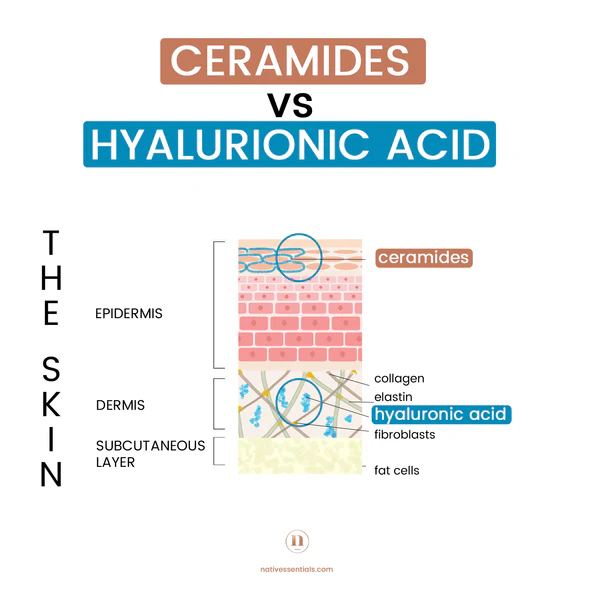
Malic Acid Skin Care Benefits – Why is it Good for Skin?
An apple a day keeps the doctor away, that’s what the famous saying goes! Not only are apples a healthy snack, the acid in them is also very beneficial for the skin. Malic acid is part of the alpha hydroxy acid family and admittedly, it’s not as popular or well-known as other acids like lactic acid or hyaluronic acid. But it can deliver incredible results for your complexion. Learn more about this acid in this guide.
What is Malic Acid?
You’ll find that malic acid is produced naturally in the body and supports movement by converting carbohydrates into energy. Without malic acid, getting from A to B would be a lot harder.
For cosmetic purposes, malic acid is extracted from fruits like apples and pears. It’s considered part of a group of chemical peels called alpha hydroxy acids. Of all the AHAs, malic acid has been the least studied, but the research that has been done suggests that this acid has many useful properties, both as a dietary supplement and as a skin care product.
Malic acid was first isolated from apple juice in 1785 and has been used in the food and beverage industry for centuries to give products a sour taste. Fast forward to the present, and you might be surprised to learn that malic acid is found in many skin and hair care products, such as:
Shampoo
Moisturizer
Nail care
Acne treatment
Anti-aging products
And many more
Malic acid is primarily used by skin care professionals as part of chemical peels, as the acid is valued for its ability to brighten the skin and smooth uneven texture.
Similar to its AHA analogs, malic acid stimulates exfoliation by preventing the breakdown of cohesive bonds within dead epidermal cells. As chemical bonds are broken and dead skin cells are removed, your complexion appears more radiant and less prone to blemish formation.
Another use for malic acid is oral ingestion in the form of a dietary supplement or tonic to relieve symptoms such as dry mouth, carotid pain, and fatigue. Dosage of the acid must be considered, more on that later.
What are the main benefits of malic acid?
We have briefly touched on some of the benefits of malic acid, and now we will take a closer look at the main benefits of malic acid and how it can affect you and your skin.
Malic Acid Prevents Breakouts and Blemishes
Malic acid is a great ingredient for preventing acne breakouts like pimples and blackheads. The exfoliating properties of the acid remove dead skin cells that contribute to a dull complexion. The buildup of these cells along with debris, bacteria, and excess sebum can lead to the formation of pimples and other skin imperfections. By penetrating the lower layers of the skin, malic acid cleans out the pores and removes dead skin cells from your face. You’ll also find that pigmentation, scarring, and other skin issues that often accompany breakouts are treated.
Malic Acid Restores pH and Hydrates the Skin
Similar to hyaluronic acid, malic acid is a humectant. What I mean by that is that it retains moisture and keeps the skin hydrated. Great for anyone with dehydrated skin, which is often confused with skin that shows signs of aging.
Malic acid is often used as an ingredient in cosmetics because of its pH balancing properties. When the skin’s pH is imbalanced, the skin’s protective barrier becomes unstable, making the skin more susceptible to dryness, irritation, and breakouts. Unlike other acids, malic acid has the unique ability to maintain a balanced pH for a longer period of time.
People with eczema should also note that malic acid can soothe and irritate the skin, as well as moisturize it. Using malic acid to treat skin conditions must be considered very carefully, as its short-term and long-term effects are unknown.
Malic Acid Helps Fight Aging and Pigmentation
Malic acid promotes a high turnover rate of skin cells, meaning that the process of shedding old skin cell layers is faster than the usual 30-day cycle, resulting in:
Less noticeable fine lines and wrinkles
Even skin tone
Smoother skin texture
Firmer, plumper-looking skin
Fewer skin blemishes
As we age, our bodies produce less collagen, causing our skin to lose firmness and elasticity. Using a higher concentration of malic acid also allows the acid to penetrate deeper into the skin layers and increase collagen formation. Because malic acid supports collagen production, skin appears firmer, plumper, and more youthful, with significantly fewer signs of aging.
When it comes to skin pigmentation, malic acid speeds up cell turnover, causing dark spots and pigmentation to become less noticeable over time. An important factor to consider is that as new skin cells become visible, the skin becomes sensitive to the sun’s UV rays. Using a high SPF is an important part of your skin care routine.
A 2013 study looked at a group of people with melasma. The study participants used a daily skin care routine containing vitamin C and malic acid, and the effectiveness of these ingredients on their melasma was monitored. After 26 months of follow-up, both ingredients were found to have short-term benefits.
How to Use Malic Acid and the Right Amount to Use
For skin care products such as cleansers and creams, malic acid is formulated in lower amounts and diluted for daily use for up to 60 days. Other conditions, such as fibromyalgia syndrome, can be treated with a product called “Super Malate,” which is a combination of magnesium and malic acid that is applied twice daily for 6 months.
The proper dosage of malic acid also depends largely on how you use the ingredient, whether as a dietary supplement or as a topical application. Other considerations include your age, gender, and medical history.
What are the side effects of malic acid?
You’ll find that some AHAs have some side effects that you should be aware of. The following are the main problems that occur when using malic acid.
Oral:
Headache
Diarrhea
Nausea
Allergic reaction
Thematic:
Itching
Redness
Increased sensitivity to sunlight
Introducing an AHA into your skincare routine is something that requires careful consideration and patch testing. If you feel your skin will be happy when you start using this AHA, be sure to find the dosage and product that works for you and your skin. If not, you’re better off with apples, and if you put them in a cake, even better!
Want to find another AHA to give your skin a healthy glow without worrying too much? Then read our guide to hyaluronic acid.


